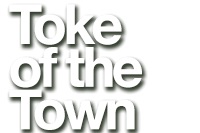| Tobacco News |
Government Study, Comparing Rates of Marijuana and Alcohol Use, Suggests That Regulation Is More Effective Means of Reducing Teen Use
Cannabis use continues to rise among youth despite the continued policy of arresting nearly a million people a every year for marijuana violations.
Marijuana use by 8th, 10th and 12th grade students increased again in 2011, with more American teenagers now using marijuana for the fourth year in a row, according to numbers released today by tyne National Institute on Drug Abuse (NIDA) and the University of Michigan as part of the annual Monitoring the Future survey.
In 2011, a slightly larger percentage of high school seniors used marijuana in the last 30 days, while slightly less had used alcohol.
| Ted Phillips Photography/MPP |
| Rob Kampia, MPP: “Arresting people for marijuana simply does not stop young people from using it, and it never will” |
”This report, once again, clearly demonstrates that our nation’s policymakers have their heads buried in the sand when it comes to addressing teen marijuana use,” said Rob Kampia, executive director of the Marijuana Policy Project (MPP). “Political leaders have for decades refused to regulate marijuana in order to keep it out of the hands of drug deals who aren’t required to check customer ID and have no qualms about selling marijuana to young people.
“The continued decline in teen tobacco and alcohol use is proof that sensible regulations, coupled with honest, and science-based public education can be effective in keeping substances away from young people,” Kampia said. “It’s time we acknowledge our current marijuana laws have utterly failed to accomplish one of their primary objectives — to keep marijuana away from young people — and do the right thing by regulating marijuana, bringing its sale under the rule of law, and working to reduce the easy access of marijuana that our irrational system gives teenagers.”
One notable finding in the annual Monitoring the Future report is the inclusion of synthetic smokables in the survey for the first time. While past-year marijuana use rates held steady at 36.4 percent among 12th graders, 11.4 percent of 12 graders reported past-year use of synthetics such as Spice.
| Drug Policy Alliance |
| Jag Davies, DPA: “It’s absurd … that the survey doesn’t also include the fiscal, health and human costs of arresting more than 1.6 million Americans each year on drug charges” |
”The decline in cigarette smoking is great news — not just because it’s the most deadly drug but also because it reveals that legal regulation and honest education are more effective than prohibition and criminalization,” said Jag Davies, publications manager of the Drug Policy Alliance (DPA). “It’s absurd, though, that the survey doesn’t also include the fiscal, health and human costs of arresting more than 1.6 million Americans each year on drug charges, including more than 750,000 for marijuana possession alone.
“Rather than measuring success based on slight fluctuations in drug use, the primary measure of the effectiveness of our nation’s drug policies should be the reduction of drug-related harm,” Davies said. “A rational drug policy would prioritize reducing the problems associated with drug misuse itself — such as overdose, addiction and disease transmission — and the problems associated with drug prohibition, such as mass incarceration, erosion of civil liberties, and egregious racial disparities in enforcement, prosecution and sentencing.
“Looking at use rates in a vacuum is missing the forest for the trees,” Davies said.
Since the survey’s inception, overwhelming numbers of American teenagers have said marijuana was easy for them to get. According to the 2011 numbers, the use of alcohol — which is also regulated and sold by licensed merchants who are required to check customer ID — continued to decline among high schoolers, as did tobacco use.
“Arresting people for marijuana simply does not stop young people from using it, and it never will,” said Kampia. “It is time for a more sensible approach.”

